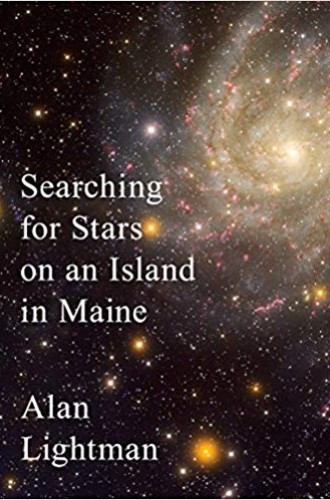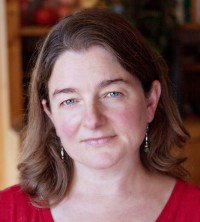A physicist explores mystical experience
Alan Lightman asks great questions about science and religion. His answers are sometimes frustrating.
Alan Lightman has made a name for himself as a physicist and a humanist who can communicate across the worlds of science and the humanities. His best-selling speculative novel, Einstein’s Dreams, enters into the mind of a young Einstein as he rethinks time and space. Lightman is a risky thinker, and his latest book of short essays wanders widely over aspects of science, philosophy, and religion. For Lightman, these territories are not non-overlapping magisteria, as proposed by Stephen Jay Gould. They are disciplines that encounter one another intimately by asking such questions as: What is the human? What is the nature of the universe? What can be explained and what cannot?
Lightman roots his desire to explore these questions in an experience that he had in a small boat off the coast of his favorite island in Maine. It was a summer night, moonless and quiet. He turned off the engine in his boat and lay down, looking up at the stars. “After a few minutes, my world dissolved into that star-littered sky. The boat disappeared. My body disappeared. And I found myself falling into infinity. . . . I felt an overwhelming connection to the stars, as if I were a part of them. And the vast expanse of time . . . seemed compressed into a dot.” When the experience ended and he sat up, he had no idea how long he’d been in the boat.
As he considers this mystical experience, Lightman does not know how to makes sense of it. “As both a scientist and a humanist,” he believes that “the transcendent experience is the most powerful evidence we have for a spiritual world. By this I mean the immediate and vital personal experience of being connected to something larger than ourselves, to feeling some unseen order or truth in the world.”
He defines his experience on the boat as an encounter with what he calls an Absolute: a power, an understanding, an idea that’s beyond scientific experimentation or proof.
A fascinating feature of the Absolutes—in fact, a defining feature—is that there is no way to get there from here—that is, from within the physical world. There is no gradual, step-by-step path to go from relative truth to absolute truth, or to go from a long period of time to eternity, or from limited wisdom to the infinite wisdom of God. The infinite is not merely a lot more of the finite.
We come to believe in Absolutes through two methods: by personal experience (like Lightman’s on the boat) or through received cultural and religious teachings. In fact, he points out, even science demands faith in two Absolutes, propositions that are unprovable. One is that the entire universe is subject to provable laws; the second is that there is a “final theory” which can complete the human search for knowledge.
I appreciate Lightman taking on this conversation in all its complexity, and I find it fascinating to enter his mind as he contemplates a hummingbird or an anthill. But there are times when his answers to his own questions fall so short that the entire project seems questionable.
At the end of an essay called “Truth,” Lightman makes a demand. “I respect the notions of God and other divine beings. However, I insist on one thing. I insist that any statements made by such beings and their prophets about the material world, including statements recorded in the sacred books, must be subject to the experimental testing of science.”
I find this statement as frustrating as if he’d said, “If someone is going to speak to me about France, I insist that they speak in French.” We frequently speak about the material world in ways that are not scientific. When the psalm says, “Deep calls to deep in the roar of your waterfalls,” is this language about the material world that must be subject to scientific analysis? Or is it a poem that suggests something of the inner and the outer worlds simultaneously, at once material and spiritual? If so, what is gained by submitting it to scientific experiment? The New Testament, Qur’an, Bhagavad Gita, and other sacred texts hold similar examples. Lightman’s demand speaks more of an inadequate theory of language than the failure of sacred texts to live up to scientific experimentation.
His conclusions about ethics are also troubling. In an essay called “Certainty,” he reckons with his inability to answer the question of free will with the same kind of certainty that Augustine managed. Lightman does not believe there is an “I” capable of willing. “I” is an illusion, an “as if” who makes decisions that aren’t really decisions. In his case, “I” is nothing more than the “electrical and chemical flows that are being exchanged between a hundred billion odd neurons in the particular skull known as Alan Lightman in the year 2016.”
He concludes his rumination by saying,
What haunts me most is the question of whether I am a piece of the clockwork myself. True, I do not fully know the mechanism of that clock—no one does—but I believe that the mechanism exists. Are all of my decisions and actions determined by prior events with complete certainty, or do I have the freedom to act in this moment in some unpredictable way—unknown to God, unknown to the hexagrams of the I Ching, unknown to the universe? In other words, am I a cog in the machine?
Not able to resolve the question of free will, Lightman decides that the way to live is to maximize pleasure and minimize pain.
Accordingly, I will try to eat delicious food, try to support my family, try to create beautiful things, and try to help those less fortunate than myself, because these activities bring me pleasure. Likewise, I will try to avoid eating uncooked eggplant, avoid leading a dull life, avoid personal anarchy, avoid hurting others, because those activities bring me pain. That is how I should live. A number of thinkers deeper than I have come to these same conclusions via other routes.
Maybe so, but Lightman’s proposition is fundamentally illogical. In a choiceless universe, why does he think he can choose pleasure and pain? In a choice-filled universe, presumably he would have to move beyond pleasure and pain in order to make meaningful choices. Further, the pleasure and pain dichotomy dissolves almost immediately upon experience. There are plenty of pleasures that lead to pain and pains that lead to pleasure. And there is no end to experiences that include pleasure and pain simultaneously.
Ethically speaking, the pleasure and pain principle is inadequate to the conditions of human life. Imagine that instead Lightman had said, “As a result of my inability to answer this most basic question, I commit myself to a search for truth, however uncomfortable it might make me and using every method at my disposal to test my hypotheses,” or if he had resolved the dilemma by saying, “Therefore I will seek in every situation in my life to do the most good possible, at the sacrifice of my own will and desire.” Either of these would have had their own internal contradictions but would have been a more satisfying ethical proposition and would have taken his own recognition of fundamental uncertainty more seriously.
Lightman demonstrates the risks for anyone wading into the waters between the sciences and the humanities: sometimes the waters are too shallow and sometimes they are too deep.







